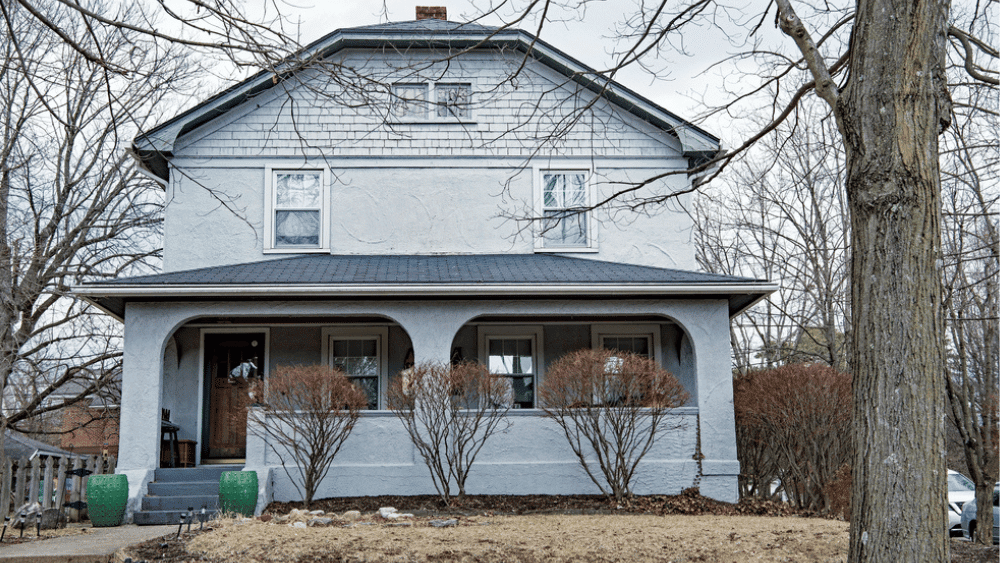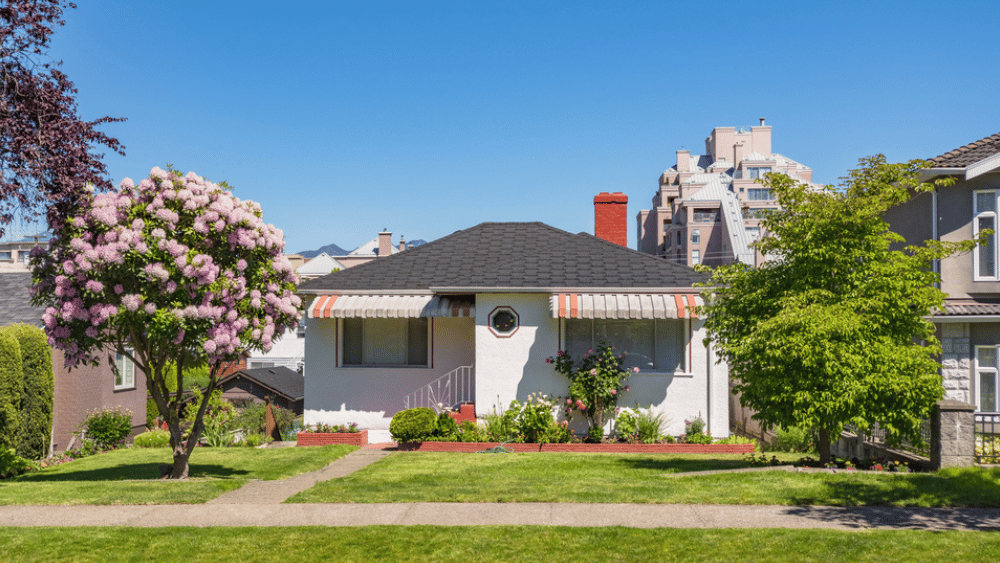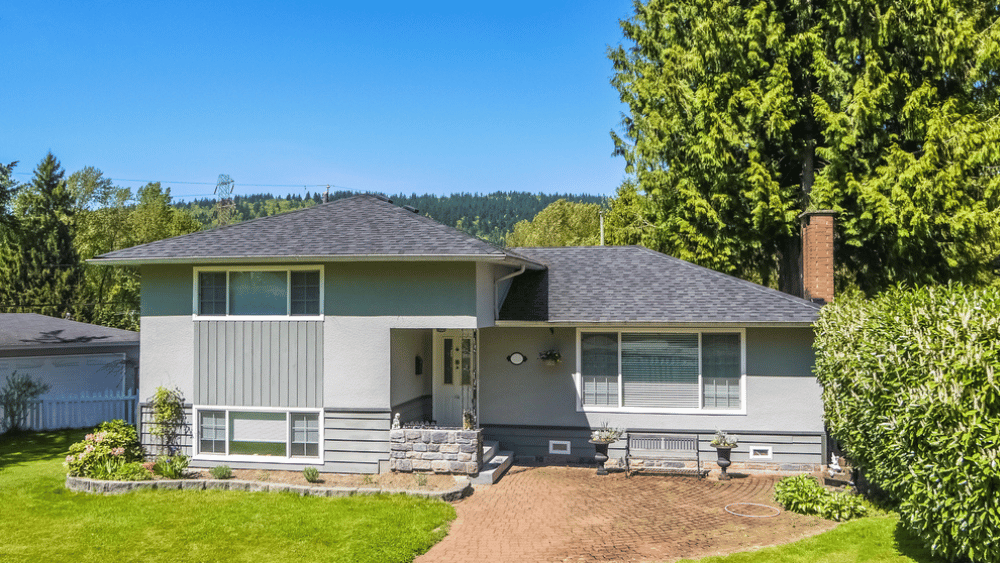
Your house smells… old. There’s just no other way to describe the musty odor that lingers in the air no matter how many times you deep clean your home. Old house smell is real — and it’s a huge turn-off for homeowners and guests alike. Thankfully, there are several steps you can take to eliminate the odor. Stick with us, and we’ll teach you how to get rid of old house smell and prevent it from coming back. Enemy number one when fighting old house smell? Microbial volatile organic compounds (mVOCs). When mold, bacteria, biofilm, and other biological growths decay, they emit mVOCs — the gases we identify as old house smell. We associate the smell of mVOCs with older homes since older buildings are often more likely to have decaying biological growths. Older homes tend to be darker with less ventilation than modern buildings. Mold and other bacterial growths thrive in dark, damp areas and will begin to emit the old house smell once they begin to decay. According to a 2018 report from American Community Survey, 26% of American homes were built between 1940 and 1969, and 13% were built before 1940. If you live in one of these homes, there’s a good chance your property has decaying bacterial growth. Even if your home is newer, you may have decaying bacterial growth in damp areas like the crawl space, attic, and basement. The health effects of inhaling mVOCs are largely unknown, according to the EPA. However, the organization reports that “exposure to mVOCs has been linked to headaches, eye and nasal irritation, dizziness, fatigue, and nausea,” even if there’s no visible mold growth. mVOCs can also aggravate asthma or allergies. Extreme reactions include disorientation and neurological effects. Furthermore, some molds produce toxins, such as mycotoxins which can cause vomiting, diarrhea, acute liver disease, and even death, depending on the level and length of exposure. Mold isn’t the only old house smell source bad for your health. Third-hand smoke can create health issues too. Residual tobacco smoke contamination lingers in rooms long after the cigarette is snuffed out. Nicotine, a toxic particle, can cling to walls and ceilings, while gases can be absorbed by soft fabrics such as upholstery and carpet. One study from 2002 discovered that those gases can be re-emitted into the air and recombine to form harmful compounds that “remain at high levels long after smoking has stopped occurring.” A mold inspection is often a good first step to eliminating old house smell. A professional can inspect your home — including the crawl space and basement — for mold so you can identify where the odor is coming from. Mold inspections can cost $300 to $400 for houses of 4,000 square feet or less, or $700 to $900 for larger homes. Mold remediation is a separate cost. Depending on how severe the problem is, remediation can cost anywhere from $500 to $6,000. Unless the amount of mold is very small, remediation is best left to the professionals. Scrubbing mold with bleach eliminates the mold, but not the spores. A professional uses commercial products to eliminate mold and spores thoroughly. Mold remediation begins with containment to keep mold spores from spreading to other areas of the house. A professional uses physical barriers or negative air pressure while fans, heaters, and A/C units are off. Once the professional has contained the area, they removes all water-logged and mold-infested materials, including carpet and drywall, and cleans the area with antifungal and antimicrobial products. Next, they vacuum the area using HEPA filtration and sanitize the remediated area. Beyond professional mold remediation, there are other steps you can take to eliminate old house smell and prevent it from coming back. Follow these tips to keep your home’s air fresh and odor-free. Moisture, or humidity, is the precursor to mold, the source of old house smell. Notorious harbors of humidity include the bathroom, the basement, crawl spaces, or anywhere with poor ventilation and a source of moisture. To prevent mold, maintain your home’s humidity level between 40% and 55%. If you feel “sticky” in the summer or notice condensation on the windows in the winter, you’ll know there’s too much humidity in the air. You can check the humidity level with a humidity monitor, also known as a hygrometer. Tips to lower humidity: Mold and mildew grow in dark areas where moisture is present, so it’s imperative to look for leaks. The first step is to check kitchen and bathroom pipes for leaks, making the necessary repairs where needed. Then inspect the common culprits like toilets, washing machines, dishwashers, water heaters, sinks, and bathtubs. Beyond puddling water or damp walls, you can use tools like a surface thermometer, damp meter, or hygrometer to detect hidden leaky pipes and excess moisture. Dirty drains are a hot spot for bacteria and mold that cause old house smell. To clean your drains, pour a cup of baking soda down the drain, followed by a cup of vinegar. After half an hour, rinse the drain with hot water. If the smell remains, it may be related to a sewer problem. In this case, you’ll need to call a professional. Older upholstered furniture may harbor mVOC emitting biological growths — especially if the furniture has lived in humid rooms or storage areas. To eliminate odor from upholstered furniture, start with a surface clean. Sprinkle baking soda on the furniture and let it sit for 15 minutes to12 hours before vacuuming clean. You’ll also need to use antibacterial products to eliminate mold growth altogether. Be sure to test the product on a small, less visible area of your furniture to ensure the product doesn’t leave a stain. If the furniture continues to smell like an old house, hire a professional for a deeper clean. Companies like Stanley Steamer steam clean upholstery and apply a deodorizer to remove dirt, allergens, and smells. If professional cleaning doesn’t get rid of the odor, you’ll need to either deconstruct the furniture to replace cushions riddled with mold or throw the pieces out. Mold spores are not visible to the naked eye, so it’s necessary to take precautionary measures in damp areas where air doesn’t circulate. Because wood absorbs and retains water, it’s a natural host for mold. That’s why it’s important to clean baseboards, trim, and wood furniture. There are many products specifically formulated to eliminate mold to choose from. Alternatively, you can make a DIY cleanser by dissolving half a cup of Borax in 32 ounces of hot water and adding two cups of distilled white vinegar and 16 ounces of hydrogen peroxide to the mix. A general rule of thumb is to change 1-inch to 2-inch filters every 1 to 3 months and 3-inch to 4-inch filters every 6 to 9 months. However, you may need to change your filters sooner depending on the quality of your filters, the number of people and pets in your home, and common household allergens. Signs you need to change your filters include noticeable increases in energy bills and dust settled around the air vents. For best results, use HEPA air filters made of fine mesh to trap harmful particles such as mold, pet dander, pollen, dust mites, and smoke. Beyond air filters, the air ducts themselves can host mold and readily spread miasma throughout your house. If you suspect your HVAC system could use a clean, hire a professional to service the system. Many companies run specials in the spring and fall, charging $30 to $50 for a tune-up. Air purifiers such as the Alen BreatheSmart with carbon filters provide ongoing protection against mVOCs. Activated charcoal and carbon filters pull odor-causing chemicals from the air and trap them. The Azuna Anti-Microbial Odor Eliminator uses carbon filters to remove mold, mildew, fungus, and bacteria at a microscopic level. You can also hang air-purifying bags around the house. Lasting up to two years, bags of activated charcoal help prevent mold, mildew, and bacteria by absorbing excess moisture and removing allergens, odors, and other pollutants. While mVOCs are the main source of old house smell, other odors may contribute to your home’s unpleasant scent. Here’s what you can do to eliminate the following odors: Smoke is “captured” by soft surfaces — particularly fabric. Here’s what you can do to rid your home of that cigarette stench: As much as you love your furry friends, they may be contributing to your home’s foul scent. Keep your pets and remove their odors with these tips: Once you’ve tackled the cause of old house smell at the source, make an effort to boost the fresh, clean aroma in your home — especially if you’re selling your home. Researchers found that simple smells boost sales and citrus increases buyers’ perceived property value. So cut a few oranges or lemons before a showing. Buyers and guests prefer neutral and natural scents over plug-in air fresheners, sprays, essential oils, and strongly scented candles. You can also leave an open box of baking soda in concealed spots to absorb odors. For persistent smells, choose all-natural commercial products like FreshWave or DampRid that absorb smells and trap excess moisture in the air. Above all, clean — regularly, seasonally, and most importantly, before a buyer is coming to view your house.mVOCs are the number one culprit of old house smell
Old house smell may harm your health
Start eliminating old house smell with a professional mold inspection
Professional mold remediation
Prevent mVOCs from returning with these DIY measures
Curtail dampness
Look for leaks
Clean out the drains
Clean upholstered furniture
Scrub hard surfaces
Change your air filters and clean your ducts and vents
Invest in air purifiers with carbon filters
Other odors that may contribute to old house smell
Cigarette smoke
Pet odors
Keep your home smelling fresh and void of old house smell



